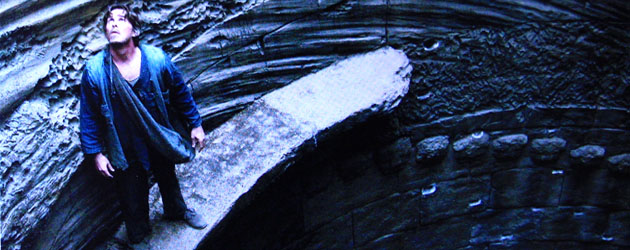Nathan Crowley

AS: Sometimes I ask the question whether a set should be a character in the movie or if production design should be invisible…
NC: It depends on your film. I’d say it should always be in the background but then weirdly when I did the Bunker with its low, bright ceiling, everyone knows the Bunker set. The way I tried to make that set not stand alone was by using an enormous amount of Modernism across the film, like in the boardroom I had to play a low ceiling there to make the Batbunker not stand out as this isolated set. The only person who’s ever gotten away with that in the past is Ken Adam. He defines his entire film with one set! Which I can really appreciate.
A set can be a character in a film if your story demands it. When I did The Lake House that set had to be a character in the film. I spent my entire budget on that one set. Which was a fight because I went to the producer and said, I’m going to spend all my budget building this set because it’s not something that exists, it’s a memory of the past for the son and father. A forgotten time in their lives. The rest of the picture we’re going to shoot in found locations. The Lake House is not my favorite film but it’s the kind of film where the set has to play a character. I oddly get many phone calls about the Lake House set. I have been asked by one architectural group to give a lecture on the design of the house.
In Batman maybe the Batcave becomes a character. But you shouldn’t lose the rest of the film, you have to make it fit into your world. A lot of logic went into it. If Gotham is New York then Wayne Manor could be in the Palisades. The Palisades have granite cliffs so the Batcave can have a waterfall. But your logic doesn’t necessarily play to the audience. You’re only playing in realism. You have to make it real because Batman is in a rubber suit running around the city! You have to believe that that could exist.
AS: You have a way of designing realism but with a bigness to it.
NC: I believe in scale. I think the audience going to the cinema deserves it. You’re fighting against HBO, so cinematic scale is your advantage. James Bond did it very well with sliding walls, elevators that take you somewhere else. And Batman spends his time hiding so he needs elevators hidden in the floor or a secret wall. Chris said, I want to access the Batbunker from a container. Great, let’s do that. You can get scale by opening a door to something vast. That’s the beauty of cinema. Just take the door to location and shoot any background that you feel suits the scene.
In Dark Knight Rises the shaft built for Bane’s prison was humongous but it’s a simple shape. It’s relatively inexpensive to build that and get scale. The thing about sets is sometimes detail is very expensive and it doesn’t really play. You’re much better off using something real to achieve detail and scale where possible. I like depth. I like rows of columns like when Bane fights Batman on the steps. If you actually look at the scale of those columns and the amount of them that’s very intentional. That was a very intentional scout: I want a big row of columns. That’s the transfer point from one location in Wall Street to somewhere in Pittsburgh. That to me is how you get scale.
When I look back at films like The Parallax View they have great scale. You can have a man running through Madison Square Garden. You get huge scale very easily. Obviously the scene has to demand that. Scale is very lonely.
Pingback: Rick Heinrichs